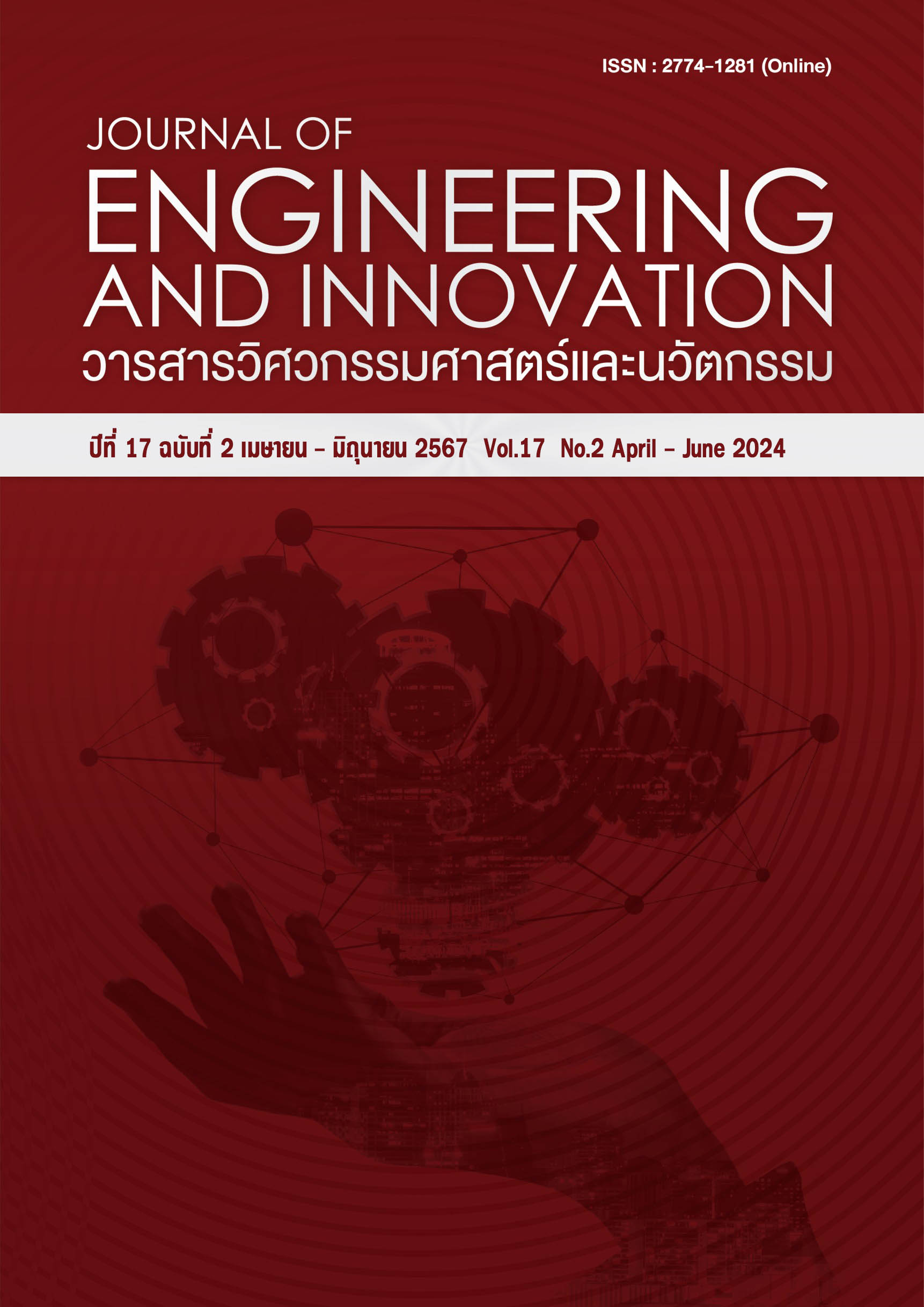Failure analysis of piezoelectric actuators in a hard disk drive head stack assembly
Main Article Content
Abstract
The most common problem in the assembly of the read/write heads in hard disk drives is the damage of the piezoelectric actuator, which is rigid but brittle and prone to fracture. The objective of this research is to predict the behavior under impact conditions of the head stack assembly (HSA) model with the piezoelectric actuator installed. The authors found that the piezoelectric actuator is damaged during installation to the support device. The finite element model of the read/write head is made using the properties of stainless steel and piezoelectric (PZT) materials, and the force on the HSA is converted to impact velocities in the range of 8.4 - 9.2 m/s. The model is then analyzed using explicit dynamics in the condition that the HSA collides with a rigid support. The HSA can move freely in vertical direction (Z axis) but cannot move in the plane (X, Y axes). After the analysis, the deformation and Von Mises stress results are investigated. The FEA results show reasonable deflection behavior of the read/write head and show that the maximum Von Mises stress in the piezoelectric actuator is due to impact. The maximum stress occurs before the read/write head reaches its maximum deflection, suggesting that explicit dynamics analysis is preferred to static analysis. The impact velocity is a factor that influences the stress results, as can be observed from the maximum Von Mises stress in the piezoelectric actuator, which ranges from 135.74 to 154.61 MPa. The stress values increase with higher impact velocities. However, the analysis predicts that the piezoelectric actuator is damaged at all impact velocities, which does not align with the actual test results. Additionally, the predicted deformation of the piezoelectric actuator is much greater than the deformation observed in actual tests. The authors believe that these analysis results can be improved by using more accurate properties and failure model parameters of the piezoelectric material in the construction of the finite element model. The material information can be obtained from appropriate mechanical tests. The results from this study can be used as a guideline for improving the assembly process to reduce the number of piezoelectric actuator damage.
Article Details
References
“Hard Disk Drive,” Wikipedia [Online]. เข้าถึงได้จาก: https://en.wikipedia.org/wiki/Hard_disk_drive [เข้าถึงเมื่อ 11 กันยายน 2557].
พิมพ์มาดา โสภณ. การปรับปรุงวิธีการทดสอบค่าความจุไฟฟ้าในกระบวนการประกอบชุดหัวเขียน-หัวอ่านข้อมูล วิทยานิพนธ์ปริญญาวิศวกรรมศาสตรมหาบัณฑิต สาขาวิศวกรรมการจัดการพลังงาน มหาวิทยาลัยเทคโนโลยีสุรนารี; 2563.
P. Wattananukulchai and D. Isarakorn, "Reliability of PMN-PT Piezoelectric Material as an Actuator for High Density Hard Disk Drive," 2018 15th International Conference on Electrical Engineering/Electronics, Computer, Telecommunications and Information Technology (ECTI-CON), Chiang Rai, Thailand, 2018. pp. 188-192.
K. W. Chan and W. -H. Liao, "Shock test and analysis of assembled suspension with microactuators in hard disk drives," 2009 International Conference on Mechatronics and Automation, Changchun, China, 2009. pp. 960-965.
อนุชา สายเจริญ ปฎิภาณ ถิ่นพระบาท และ ประกอบ ชาติภุกต, การวิเคราะห์พารามิเตอร์ที่มีผลกระทบต่อความสามารถในการต้านทานของการเจาะทะลุของกระสุนบนผิวเกราะอะลูมิเนียมด้วยระเบียบวิธีไฟไนต์เอลิเมนต์, RMUTP Research Journal, Vol. 16, No. 1; 2565.
TANG En-ling, LI Yue, WANG Rui-zhi, HAN Ya-fei, WANG Li, XIANG Sheng-hai, LI Zhen-bo, GAO Guo-wen, LIN Xiao-chu, LIU Mei, XU Ying-liang. Research on Dynamic Response and Electrical Output Characteristics of PZT-5H Piezoelectric Ceramics under Strong Shock. Acta Armamentarii; 2018, Vol.39, 983-990.
Steven R. Anton, Alper Erturk, and Daniel J. Inman. Bending Strength of Piezoelectric Ceramics and Single Crystals for Multifunctional Load-Bearing Applications, IEEE transactions on ultrasonics, ferroelectrics, and frequency control; Vol.59, No.6, 2012, 1085-1092.

